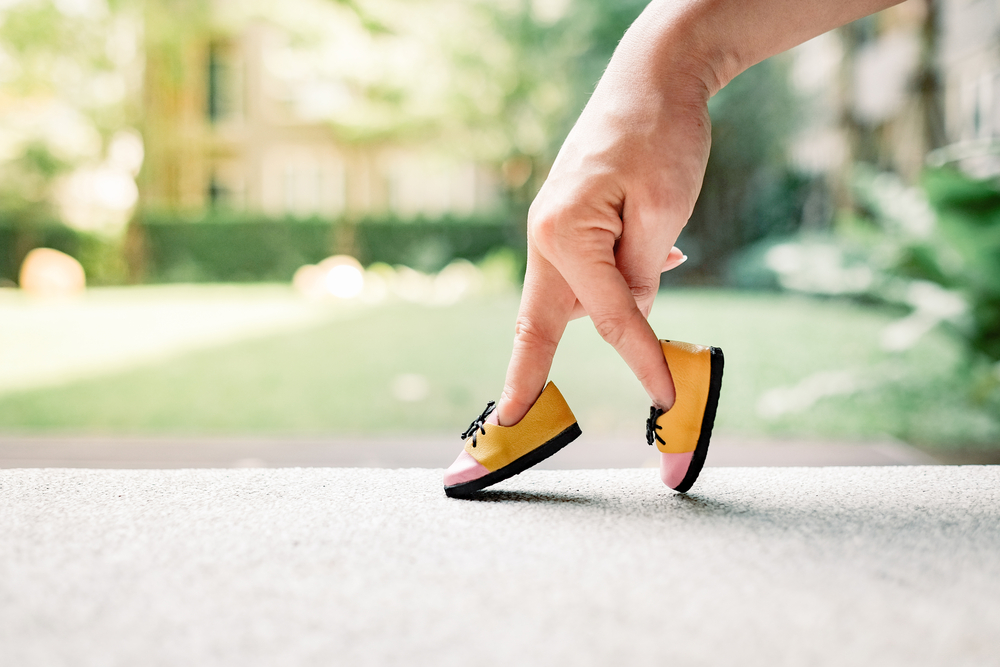Pilot Study Participant Helping Test Exoskeleton Device for MS Therapy Encouraged by Results
Written by |

Since being diagnosed with multiple sclerosis (MS) 20 years ago, Kathy Miska’s ability to walk has steadily worsened, especially in recent years. As a participant of a pilot study at the Cleveland Clinic Mellen Center for Multiple Sclerosis, however, she is cheered by the effect of a robotic device that attaches to her body during physical therapy.
Miska, 56, of Strongsville, Ohio, is one of five people with MS participating in a research study (NCT04000373) that is evaluating the safety and feasibility of the EksoGT exoskeleton in MS gait rehabilitation.
Findings from the study, which is near completion, are expected to be published this year.
Funded by a private donor and a Cleveland Clinic Caregiver Catalyst Grant, the study is among the first to determine whether the wearable Ekso Bionics device works in patients with MS who have severe mobility limitations. The technology is currently approved in the U.S. for use in rehabilitation programs for stroke and spinal cord injury.
“The idea is to use the exoskeleton as part of PT [physical therapy] to hopefully achieve better results, particularly when the patients can’t do much walking by themselves and can’t (fully) exercise their legs,” Francois Bethoux, MD, chair of Cleveland Clinic’s department of physical medicine and rehabilitation, and principal study investigator, said in Cleveland Clinic news story.
“Just like with muscles, with the nervous center you ‘use it or lose it.’ The goal is that the patient will find it easier to walk even when they’re not using the device,” Bethoux said.
During physical therapy, a trained therapist straps the adjustable device onto the patient, whose legs, feet, and torso are supported by a metal brace. Guided by the therapist, the exoskeleton manipulates the legs and waist as the patient stands, walks on a level surface, and sits. Knee and hip joints are driven by battery-powered motors as the patient uses an assistive device such as a cane for balance and body positioning.
“I feel like I have really made progress,” Miska said. She recently finished the study’s 24 three-times-weekly, hour-long training sessions, which were spread over eight weeks. Sessions consist of stretching, overground gait training, and gait training with the exoskeleton.
“My posture looks better and my walking has improved,” Miska said. “Hopefully, this will get me stronger. It’s encouraging.”
Therapists say Miska’s walking speed has increased, and her endurance and gait have improved.
“It seems to be really making a difference in Kathy’s gait training,” said Matthew Sutliff, one of Miska’s physical therapists. “She has a lot of weakness in her right leg, but her left leg is a bit stronger. So we programmed the device to give her a fair amount of support for her right leg to teach the proper step pattern. As we continued, we slowly reduced assistance for the right leg, requiring her muscles to perform more of the work.”
According to Sutliff, the exoskeleton stimulates the “nerve memory,” so that muscles ultimately take over.
“The brain is constantly adapting to what we do,” he said. “By continually repeating something in a certain format, the hope is to ‘rewire neural pathways in the brain’ to walk better, more naturally and safely.”
The pilot study is assessing the exoskeleton’s safety, specifically examining adverse events during or between treatment sessions. In particular, the researchers are assessing falls and musculoskeletal pain. The device’s efficacy is evaluated based on the patient’s spasticity, hip flexor strength, gait parameters, and walk tests. All of these assessments are performed without the patient wearing the device.
“Our aim with this pilot study is to assess the feasibility and safety of EksoGT exoskeleton use in individuals with MS and to collect preliminary efficacy data on gait and walking outcomes,” Bethoux said in another Cleveland story. “Encouraging findings would support the design of a larger clinical trial of this device for gait training in people with MS.”





